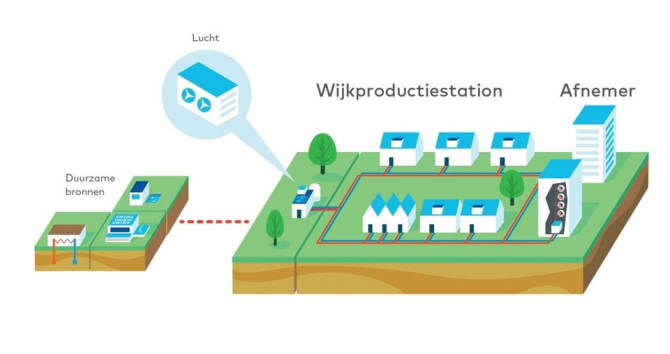
Project
District heat networks as an alternative for supplying natural gas: An analysis of technical criteria and policy instruments for Dutch residential areas
The average global temperature has risen in the last decades with far-reaching and potentially catastrophic consequences for humans and nature. In 2015, Countries from all over the world set up the Paris Climate Agreement to fight climate change. One of its goals is to phase out non-renewable sources such as natural gas before 2050. To reach this goal, the Netherlands must urgently transform the energy and heat market, as heating residential housing accounts for up to 78% of the European energy. To create a sustainable energy and heat network, the climate agreement goals are translated to policy instruments on a European level, which are implemented by member states.
Technological challenge
Dutch residential houses are highly dependent on natural gas as an essential source for heating. Since the goal is set to phase out the use of natural gas,
new sustainable sources should be put in place. This study focuses on low-temperature heat sources transported to the building through low temperature district heating (LTDH) networks. To use the low temperature heat from LTDH networks, residential buildings should be adapted to transition towards alternative renewable heat sources. This transition requires action from multiple stakeholders involved in the process. Together they determine the success of the transition.
Especially, the influence of policy instruments from, for example, Dutch governmental institutions are essential to accelerate the energy transition. A key
challenge is prioritizing residential housing to adapt an LTDH network. This PhD thesis evaluates the current state of the art in the transition towards LTDH in residential buildings. Furthermore, suggestions for effective policy instruments are
generated through the knowledge gained, such as adapting and creating policy instruments compatible with the needs in practice. These suggestions will be based on data analysis and technical criteria. We aim to answer the following
question: What changes are needed to get residential houses and their owners ready for lowtemperature district heating before 2050?
